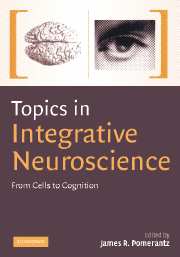Book contents
- Frontmatter
- Contents
- List of contributors
- Preface
- Overview of neuroscience, choice and responsibility
- 1 Neuroscience, choice and responsibility
- PART I HIGHER ORDER PERCEPTION
- PART II LANGUAGE
- PART III MEMORY SYSTEMS
- PART IV SENSORY PROCESSES
- Overview of sensory processes
- 13 Song selectivity, singing, and synaptic plasticity in songbirds
- 14 Voltage-dependent sodium currents in hair cells of the inner ear
- Index
- Plate section
- References
13 - Song selectivity, singing, and synaptic plasticity in songbirds
Published online by Cambridge University Press: 08 August 2009
- Frontmatter
- Contents
- List of contributors
- Preface
- Overview of neuroscience, choice and responsibility
- 1 Neuroscience, choice and responsibility
- PART I HIGHER ORDER PERCEPTION
- PART II LANGUAGE
- PART III MEMORY SYSTEMS
- PART IV SENSORY PROCESSES
- Overview of sensory processes
- 13 Song selectivity, singing, and synaptic plasticity in songbirds
- 14 Voltage-dependent sodium currents in hair cells of the inner ear
- Index
- Plate section
- References
Summary
Introduction
Birdsong, like human speech, is a learned vocal behavior that requires auditory feedback. Both as juveniles, while they learn to sing, and as adults, songbirds use auditory feedback to compare their own vocalizations with an internal model of a memorized target song. Here we describe experiments that explore the properties of the songbird anterior forebrain pathway (AFP), a basal ganglia–forebrain circuit known to be critical for normal song learning and for adult modification of vocal output, but not for normal adult singing. First, neural recordings in anesthetized, juvenile birds show that single AFP neurons become specialized to process the song stimuli that are compared during sensorimotor learning. AFP neurons develop tuning to the bird's own song, and in many cases to the tutor song as well, even when these stimuli are manipulated to be very different from each other. Second, neural recordings from adult, singing birds reveal robust singing-related activity in the AFP, which is present even in deaf birds. This activity is likely to originate from premotor areas, and could represent an efference copy of motor commands for song, predicting the sensory consequences of motor commands. Finally, in vitro studies of the AFP show that recurrent synapses between neurons in the AFP outflow nucleus can undergo activity-dependent and timing-sensitive strengthening that appears to be restricted to young birds.
- Type
- Chapter
- Information
- Topics in Integrative NeuroscienceFrom Cells to Cognition, pp. 363 - 384Publisher: Cambridge University PressPrint publication year: 2008



